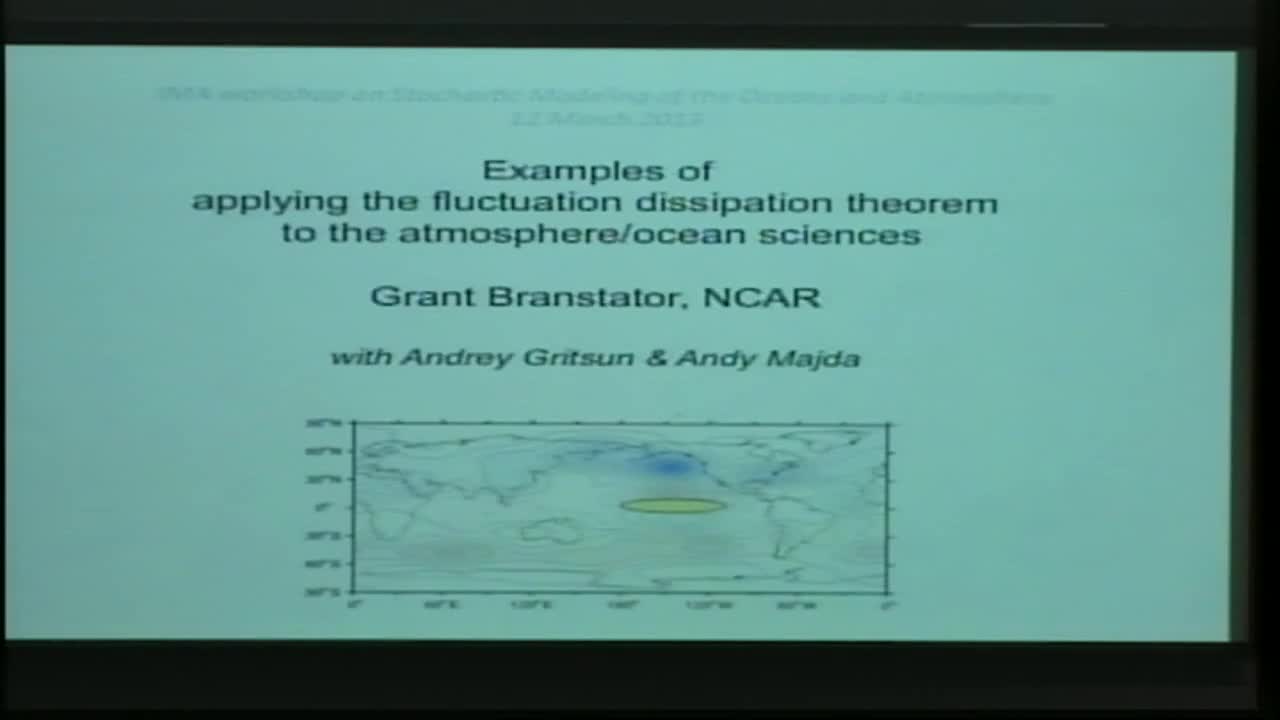Two Examples of Applying the Fluctuation Dissipation Theorem to Problems in the Atmosphere/Ocean Sciences
Presenter
March 12, 2013
Keywords:
- Oceanagraphy, fluid
MSC:
- 37N10
Abstract
Having a linear operator that can accurately estimate how a system will react to a weak external stimulus makes it possible to address many problems of interest to the atmosphere/ocean science community. Such problems include questions of optimal forcing and response and systematic investigations of response as a function of forcing properties. An approach that has been shown to produce such operators is the fluctuation dissipation theorem (FDT). Here we demonstrate its usefulness by applying it to two topics. The first topic concerns the response of the atmosphere to tropical heat sources. We use FDT to investigate how the remote response to such sources depends on their time dependent properties, in particular to the speed at which such sources may move along the equator, as for example during Madden-Julian Oscillation events. The second topic concerns the response of the ocean to surface fluxes. In this case we search for the most efficient way to excite long lasting responses in the SST field and the Atlantic Overturning Circulation if the ocean is forced by anomalous sources of heat, momentum or salt.
